DDJ-SB3 vs. DDJ-400 direct straight to-the-point DJ gear comparison. Which one should you buy? The Pioneer DDJ-400 and the Pioneer DDJ-SB3 are entry-level DJ controllers that may seem pretty similar at first. Let’s go over all of the features of these devices to help you choose your perfect DJ controller.
- The loop control sections
- The pitch faders
- Decks 3 and 4 access?
- No key lock button on the DDJ-400
- Mixer section
- The Cue/Master balance knob
- Audio FX
- Performance pads audio FX
- Jog wheels
- Performance pads (+DDJ-SB3 Serato DJ Lite limitations)
- Pad Scratch mode on the DDJ-SB3
- Software compatibility
- Inputs and outputs
- Pros and cons
- Where can you get both of the devices?
- The conclusion
This web portal is reader-supported, and is a part of the Amazon Services LLC Associates Program and the eBay Partner Network. When you buy using links on our site, we may earn an affiliate commission!
Update note: Both Pioneer DDJ-400 and Pioneer DDJ-SB3 have been officially discontinued by Pioneer DJ and are not in production anymore. If you’re interested in other DJ controllers at similar price point, check out these: 5 Best Pioneer DJ Controllers For Beginners This Year!

The loop control sections
The loop control section on the DDJ-400 presents itself as a standard loop section design inspired by the one present on the Pioneer CDJ players like the Pioneer CDJ-2000NXS. It’s really convenient and simple to use, just as the slightly different loop controls on the DDJ-SB3.
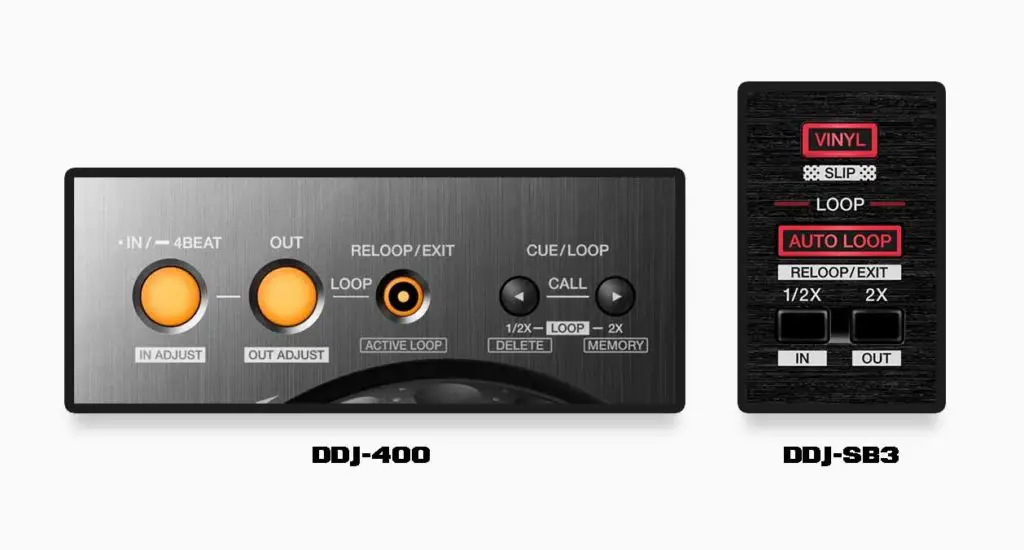
Speaking of the loop controls on the DDJ-SB3, these are designed after the classic DDJ controller series, compiling all the loop related buttons with the auto loop control in a small section on the right hand side of each deck.
All Pioneer DJ Controllers Listed – 10 Years Evolution
It all comes down to the individual preferences here, as both of the devices will give you full control over your audio loops. The only major differences in this matter are the design choices regarding slightly different control schemes.
The pitch faders
The pitch fader / tempo fader is slightly bigger on the DDJ-400. In theory this can make your beatmatching and tempo matching process easier, but when it comes to the generally smaller sized tempo faders on most of the 2-channel entry level DJ controllers, this doesn’t really make that much of a difference.
The location of the pitch faders is also different between the two devices. On the DDJ-SB3 the pitch fader is located on top of each deck, while on the DDJ-400 – on the bottom of each deck near the performance pad section.

Besides the differences in placement and size, the tempo faders unsurprisingly work equally good on both the DDJ-400 and the DDJ-SB3. Again, this comes down to a simple question of preference.
Decks 3 and 4 access?
The Pioneer DDJ-SB3 features buttons to switch between virtual decks 1/2 and 3/4, when the DDJ-400 allows you to control 2 decks at most.

While this is a great feature to have on 4-channel controllers, on a small 2-channel unit it can be quite tricky to use properly. Nevertheless its good to have it onboard on the DDJ-SB3 should you ever need it.
No key lock button on the DDJ-400
The DDJ-400 does not feature a dedicated Key-Lock button that is present on the DDJ-SB3, but this function can be easily toggled inside the Rekorbox software.
Mixer section
There is not much to say here aside from two things: 1 – the mixer section on the DDJ-SB is much narrower as this unit does not feature the Beat FX Strip on the right side of the audio mixer, 2 – the Cue/Master balance knob is not present on the DDJ-SB3 at all, while on the DDJ-400 it’s located near the headphones level knob on the left side of the mixer section.

It is also important to mention that the mixer knobs and the knobs on the two devices are in our experience smaller and quite wobbly when compared to the sturdy knobs on say a DDJ-SX3 controller. This of course does not affect normal use.
The crossfaders on both devices feel nearly identical and seem to have the same cutting distance.
Another thing is that the LED sound level indicator location is a bit different on both of the devices, but that’s mostly a cosmetic difference.
Other than that, the mixer sections on both devices are highly similar in terms of functionality and control layout.
The Cue/Master balance knob
The thing we’ve already mentioned but is still important is that the Cue/Master balance knob used for balancing the current channel cue audio and master output in your headphones is not present on the DDJ-SB3. While this setting can still be accessed inside the software, it is certainly a peculiar design choice to not include it somewhere in the front of the device, or on top of the mixer section where it’s present on the DDJ-400.
Audio FX
The audio FX sections largely differ between the DDJ-400 and the DDJ-SB3.
Once again, the DDJ-400 had its FX section modeled after DJM mixer layouts, and so it features a single Beat FX strip that allows you to use one audio FX on one audio channel at the time (1, 2 and Master settings are available). Other than that, you can also utilize the Pad FX mode on the DDJ-400 to gain access to a larger variety of audio FX.

The DDJ-SB3 goes with the classic DDJ series layout in terms of FX controls, it features one dedicated audio FX section for each deck, and it allows you to control and toggle 3 different audio FX on one audio channel at the same time. On the DDJ-SB3 the two audio FX sections work independently on each deck.
Performance pads audio FX
The DDJ-SB3 also features the FX Fade performance pad mode that works similarly as the Pad FX mode on the DDJ-400, however the FX Fade effect presets feature only FX for fading out the tracks and are not customizable, while the Pad FX on the DDJ-400 can be fully customized within the Rekordbox software.
Jog wheels
The jog wheels are the same size on both devices, and both of these are capacitive touch sensitive jog wheels, similar to those you may find on other entry-level Pioneer DDJ controllers. There are no needle indicators nor jog wheel displays on any of these units.
On the DDJ-SB3 the silver colored jog wheel edges are modeled after the original DDJ-SX series jog wheels, with little indents all around them.

On the DDJ-400 there is a rubberized finish alongside with the indents around each jog wheel, which is meant to look and feel similar to the full-sized jog wheels on Pionner CDJ Players.
The jog wheels on the DDJ-SB3 have a slightly longer free spin however while the difference is noticeable it does not affect normal usage.
Performance pads (+DDJ-SB3 Serato DJ Lite limitations)
The performance pads are slightly bigger on the DDJ-SB3. Both of the devices feature 8 performance pads. The available performance pad modes slightly differ between the DDJ-SB3 and DDJ-400.
An important thing is that the Pioneer DDJ-SB3 allows you to use only 4 hot-cues without upgrading to Serato DJ Pro software (and this is an optional paid upgrade).
Other than that, if you don’t upgrade to Serato DJ Pro on the DDJ-SB3, you won’t be able to fully utilize the access to the vinyl slip mode, Beat Jump, Loop Rolls and the Slicer Mode. Those kind of artificial software limitations can surely be disappointing.
With Serato DJ Lite on the DDJ-SB3 you are also limited to 4 samples in a single bank instead of 8 with Serato DJ Pro upgrade.
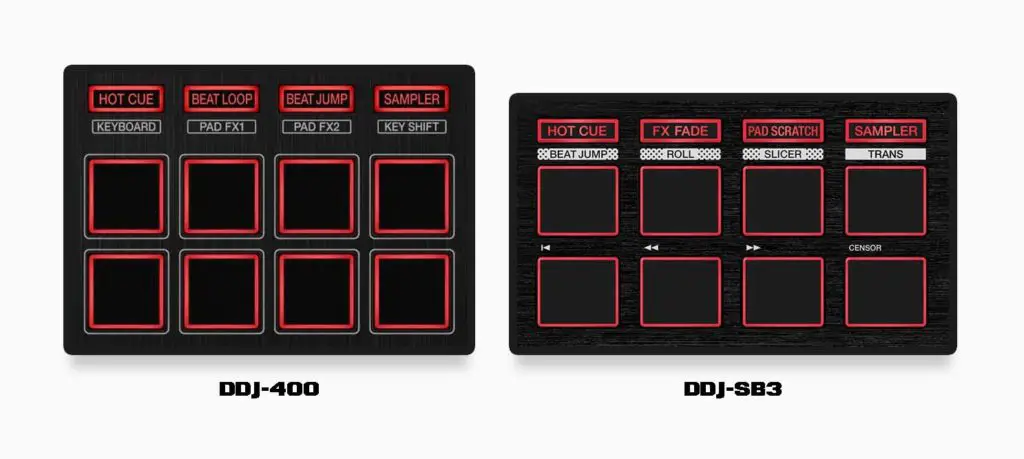
The functionalities of the performance pad modes also differ between those 2 devices. The DDJ-400 allows you to utilize both the Key Shift feature (for changing the current track’s key) and the Keyboard pad mode (for playing around with the pitch of selected track parts). The DDJ-SB3 doesn’t feature those functions.
The DDJ-SB3 on the other hand features a Slicer Mode (active after Serato DJ Pro upgrade), which allows you to automatically chop up the track into 1 bar samples and mash them up live by pressing pads corresponding to each track fragment. This feature on the other hand is not present on the DDJ-400.
While the DDJ-SB3 features the FX Fade pad mode (8 unique uncustomizable audio fade FX triggered using performance pads), the DDJ-400 features the previously mentioned Pad FX mode which is fully customizable and allows you to save up to 16 different pad FX in 2 FX banks.
On the DDJ-SB3 the 4 bottom pads while used with the shift button also serve as additional transport controls (moving the track forwards and backwards, jumping to the beginning) and the censor button (momentarily reversing the track).
The DDJ-SB3 also features the Trans effect which the DDJ-400 natively doesn’t have. It’s essentially a volume ducking effect with different beat divisions to choose from.
Pad Scratch mode on the DDJ-SB3
The DDJ-SB3 features the Pad Scratch performance pad mode, which the DDJ-400 doesn’t have.
The Pad Scratch mode consists of scratch macros which can be triggered using the performance pads.
When each of the 8 pads is pressed down when the Pad Scratch mode is enabled, you will be presented with an instant vinyl scratch that the software will perform automatically on the track currently loaded on the active deck for as long as you keep holding the pad down.
You will be able to see the needle indicator moving in the software, alongside with the crossfader movement that is associated with the scratch you’ve chosen. You can also mix the scratch presets together by pressing the pads in the Pad Scratch mode in a timely manner. There are 8 different scratches to choose from in total.
This feature is mostly a gimmick aimed at beginners to provide reference for learning the basic scratches, and it doesn’t really have much practical use beyond producing automatic scratch sounds without touching the jog wheel or the crossfader.
Pioneer DDJ-FLX6 – DJ Controller Overview
Needless to say, while this feature does what its supposed to do and it does it just fine, it cannot be a substitute for regular scratching. It can also sound really mechanical after a while, similar to the Jog Cutter mode on the DDJ-FLX6, as it doesn’t seem to have any parameter randomization built into it, and the artificial scratches will sound pretty much the same when used many times in a row.
Software compatibility
While the DDJ-400 is a Rekordbox dedicated controller, the DDJ-SB3 is a controller designed to work solely with Serato DJ software.
This means that the DDJ-SB3 won’t work with Rekordbox, and similarly, the DDJ-400 won’t work with Serato DJ.
Both of these controllers will work with Virtual DJ and Traktor with custom mappings, and generally can be mapped to any DJ software of your choice that has MIDI mapping capabilities.
The main “problem” with the DDJ-SB3 is that as we’ve said many hardware features are locked by default (without the paid upgrade to Serato DJ Pro), as this controller originally comes bundled only with Serato DJ Lite software.
Features such as access to all 8 hot-cue points, 8 sampler slots, Slip Mode, Beat Jump, Loop Rolls and Slicer Mode are available to you only if you pay for the software upgrade to Serato DJ Pro.
The Pioneer DDJ-400 comes with the full version of Rekordbox, and all its features are available out of the box, without any additional payments or software upgrades.
Inputs and outputs
Curiously there is not much to say here, both the DDJ-400 and the DDJ-SB3 feature exactly the same audio inputs and outputs.

Both the DDJ-400 and the DDJ-SB3 have:
- An USB connection port (for connecting the device to your computer)
- The standard master RCA output
- 1/4″ microphone input
- 1/4″ headphone output
Pros and cons
DDJ-400
Pros:
- Great value for the price
- Slightly longer pitch faders than the ones on the DDJ-SB3.
- One of the best entry-level controllers when it comes to the feature set
- Full Rekordbox software license included
- Rekordbox offers great Pad FX customization that Serato DJ doesn’t have
- Control layout based on the CDJ x DJM setup design
Cons:
- No physical key lock button on the device
- No access to virtual decks 3 and 4
DDJ-SB3
Pros:
- Possible access to virtual decks 3 and 4
- The beginner friendly Pad Scratch function
- Slightly bigger performance pads
Cons:
- Comes only with Serato DJ Lite (Former Serato DJ Intro)
- Many of the controller’s features are soft locked by default without the paid upgrade to Serato DJ Pro
- No Cue/Master balance knob on the device
Where can you get both of the devices?
You can check the availability of both the DDJ-400 and the DDJ-SB3 on Amazon.com:
The conclusion
Both of these quality entry-level DJ controllers are a great choice for beginners and people who want to begin their DJing journey.
The major differences between the Pioneer DDJ-400 and the Pioneer DDJ-SB3 come from the fact that these two controllers have been designed to work with different pieces of software that essentially support slightly different workflow and control schemes.
On the other hand, the DDJ-400 comes with the full version of Rekordbox software, while the DDJ-SB3 comes only with Serato DJ Lite – this means that as we said, many features of the DDJ-SB3 are soft-locked without the upgrade to Serato DJ Pro. Keep the price of eventual software upgrade in mind when comparing the prices of these two units.
Both as a beginner and as an aspiring DJ you won’t be disappointed with any of these devices. We hope that we’ve helped you to make a good choice. Rock on!
| Pioneer DDJ-400 on Ebay: |
| Pioneer DDJ-SB3 on Ebay: |

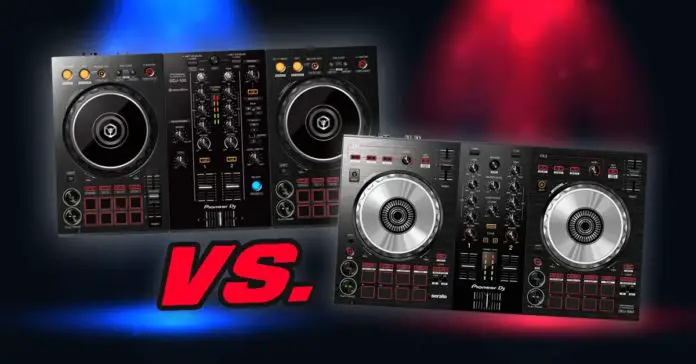
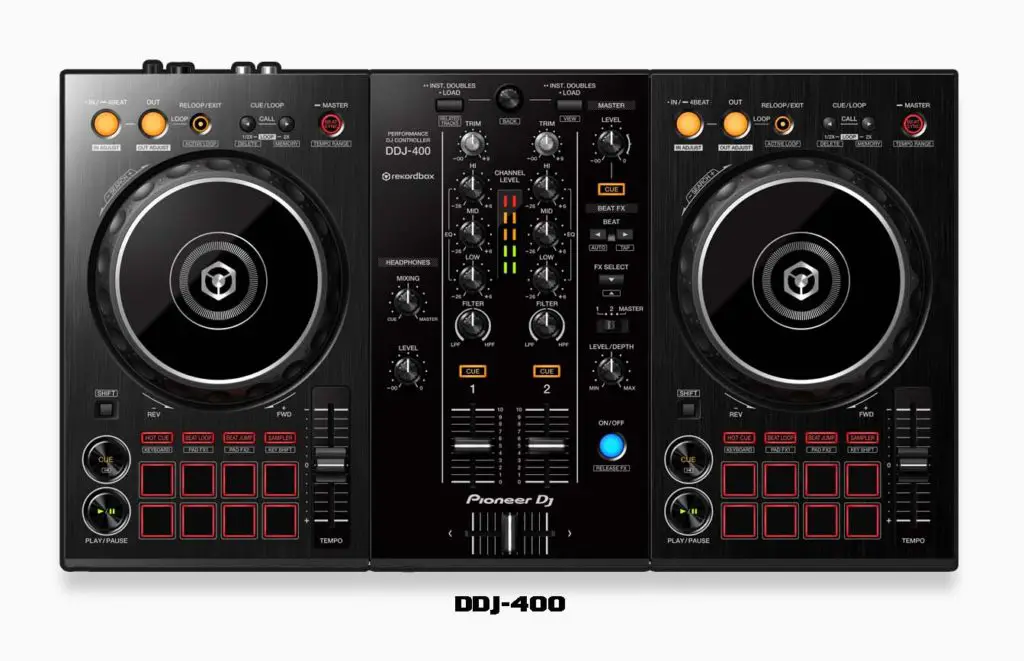
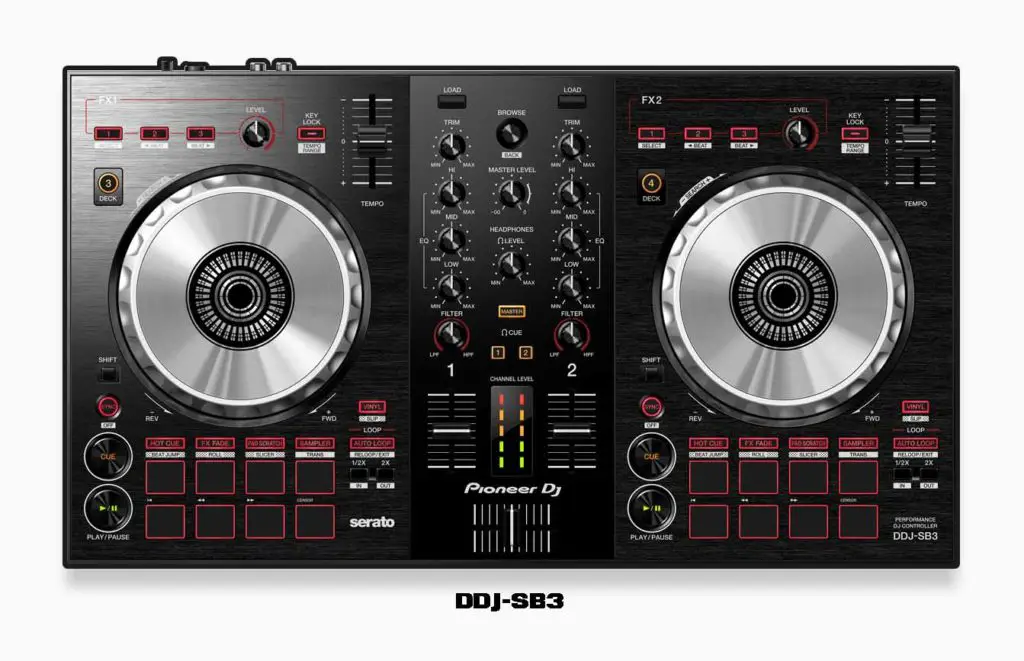

[…] DDJ-400 vs. DDJ-SB3 (Which Is Better For You?) […]
[…] DDJ-400 vs. DDJ-SB3 (Which Is Better For You?) […]